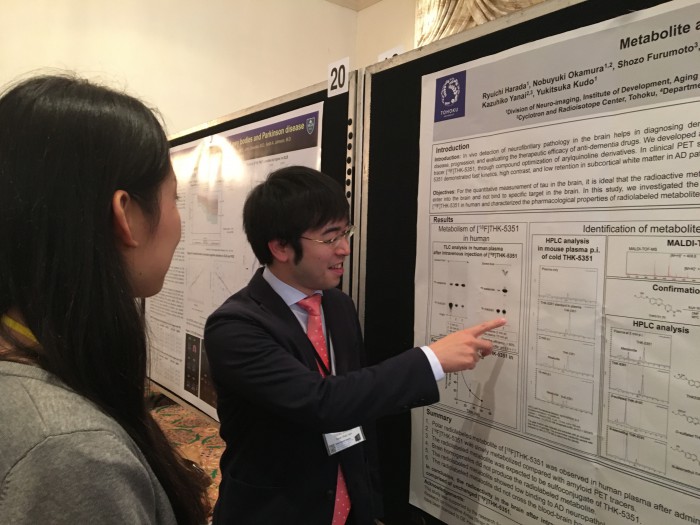News & Topics
Mar 16, 2016
Report of Human Amyloid Imaging; HAI2016 in FloridaーRyuichi Harada(Tohoku University)ー
Division of Neuro-imaging, Institute of Development, Aging and Cancer, Tohoku University
Department of Pharmacology, Tohoku University Graduate School of Medicine
I attended Human Amyloid Imaging Conference; HAI2016 held Jan 13 – 15, 2016 in Miami Beach, Florid using international activities support of Brain Protein Aging and Dementia Control.
Recent meeting of HAI is held in Miami Beach, Florida. Visitors are enjoying nice weather and beach on New Year’s Vacation. In back of the hotel (meeting place), we can enjoy beautiful beach and aqua sea.

This meeting started at 2007, which are organized by William Klunk and Chet Mathis of the University of Pittsuburgh, who are co-developers for amyloid imaging using [11C]PiB. Although initial meeting held in Boston has only one day, this year meeting has many attendees (newly 350) and extended days (2 and half days). Annual topics of this meeting are focused on kinetic modeling, pathology, relationship between imaging markers and clinical symptoms, and standardization of “amyloid imaging”. However, this year the meeting focused on overwhelmingly on “tau imaging” and its related topics. I feel big changes of this meeting this year.
In addition to [18F]THK5351/[18F]THK5117 developed by Tohoku University/GE Healthcare, [11C]PBB3 from National Institute Radiological Science (NIRS), and [18F]AV1451 (as known as [18F]T807) from Avid/Eli Lilly, novel radiotracers have been reported by Roche (18F-RO6958948) and Genentech (18F-GTP1) as tau PET radiotracers. They show good kinetics and high contrast in Alzheimer’s disease patients with low off-target binding. The race of the development of tau radiotracers is going down to the wire. I showed data of characteristics of [18F]THK5351 metabolites, which is critical for the quantification of PET images, and enjoyed discussions with current and future THK users.

Main presentations of tau PET imaging was [18F]AV1451. There are a lot of the presentations using [18F]AV1451 such as tau PET imaging of familial AD (DIAN study) and non-AD tauopathies (FTD including MAPT mutations, CBS, and PSP). On the other hand, researchers emphasized the importance of imaging-autopsy study because there are some discrepancy between tracer retention and reported tau distribution. I feel clinical use of tau imaging will require deeper understanding and fully validations of tau radiotracers.
I acknowledge travel scholarship from international activities support of Brain Protein Aging and Dementia Control.

